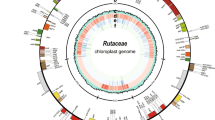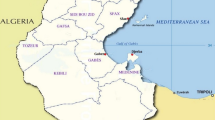Abstract
Cotton (Gossypium spp.) is the most important natural textile fiber crop, and Gossypium hirsutum L. is responsible for 90% of the annual cotton crop in the world. Information on cotton genetic diversity and population structure is essential for new breeding lines. In this study, we analyzed population structure and genetic diversity of 288 elite Gossypium hirsutum cultivar accessions collected from around the world, and especially from China, using genome-wide single nucleotide polymorphisms (SNP) markers. The average polymorphsim information content (PIC) was 0.25, indicating a relatively low degree of genetic diversity. Population structure analysis revealed extensive admixture and identified three subgroups. Phylogenetic analysis supported the subgroups identified by STRUCTURE. The results from both population structure and phylogenetic analysis were, for the most part, in agreement with pedigree information. Analysis of molecular variance revealed a larger amount of variation was due to diversity within the groups. Establishment of genetic diversity and population structure from this study could be useful for genetic and genomic analysis and systematic utilization of the standing genetic variation in upland cotton.




Similar content being viewed by others
References
Abdalla AM, Reddy OUK, El-Zik KM, Pepper AE (2001) Genetic diversity and relationships of diploid and tetraploid cottons revealed using AFLP. Theor Appl Genet 102:222–229
Bertini CHCM, Schuster I, Sediyama T, Barros EG, Moreira MA (2006) Characterization and genetic diversity analysis of cotton cultivars using microsatellites. Genet Mol Biol 2:321–329
Brown WL (1983) Genetic diversity and genetic vulnerability: an appraisal. Econ Bot 37:4–12
Campbell BT, Williams VE, Park W (2009) Using molecular markers and field performance data to characterize the Pee Dee cotton germplasm resources. Euphytica 169:285
Chen G, Du XM (2006) Genetic diversity of source germplasm of upland cotton in China as determined by SSR marker analysis. Acta Genet Sin 33(8):733–745
Chen XJ, Min DH, Yasir TA, Hu YG (2012) Genetic diversity, population structure and linkage disequilibrium in elite Chinese winter wheat investigated with SSR markers. PLoS One 7:e44510
Evanno G, Regnaut S, Goudet J (2005) Detecting the number of clusters of individuals using the software STRUCTURE: a simulation study. Mol Ecol 14:2611–2620
Fang DD, Hinze LL, Percy RG, Li P, Deng D, Thyssen G (2013) A microsatellite-based genome-wide analysis of genetic diversity and linkage disequilibrium in Upland cotton (Gossypium hirsutum L.) cultivars from major cotton-growing countries. Euphytica 191:391–401
Hardy OJ, Vekemans X (2002) SpaGeDi: a versatile computer program to analyze spatial genetic structure at the individual or population levels. Mol Ecol Notes 2:618–620
Iqbal MJ, Aziz N, Saeed NA, Zafar Y, Malik KA (1997) Genetic diversity evaluation of some elite cotton varieties by RAPD analysis. Theor Appl Genet 94:139–144
Iqbal J, Ouk Reddy, Km El-Zik, Pepper AEA (2001) Genetic bottleneck in the evolution under domestication of upland cotton Gossypium hirsutum L. examined using DNA fingerprinting. Theor Appl Genet 103:547–554
Kantartzi SK, Ulloa M, Sacks E, Stewart JM (2009) Assessing genetic diversity in Gossypium arboreum L. cultivars using genomic and EST-derived microsatellites. Genetica 136:141–147
Liang J, Lu Y, Xiao P, Sun M, Corke H et al (2010) Genetic diversity and population structure of a diverse set of rice germplasm for association mapping. Theor Appl Genet 121:475–487
Liu KJ, Muse SV (2005) PowerMarker: an integrated analysis environment for genetic marker analysis. Bioinformatics 21:2128–2129
Liu B, Wendel JF (2001) Intersimple sequence repeat (ISSR) polymorphisms as a genetic marker system in cotton. Mol Ecol Notes 1:205–208
May OL, Bowman DT, Calhoun DS (1995) Genetic diversity of U.S. upland cotton cultivars released between 1980 and 1990. Crop Sci 35:1570–1574
Moiana LD, Filho PSV, Goncalves-Vidigal MC, Lacanallo GF et al (2012) Genetic diversity and population structure of cotton (Gossypium hirsutum L. race latifolium H.) using microsatellite markers. Afr J Biotechnol 11(54):11640–11647
Multani DS, Lyon BR (1995) Genetic fingerprinting of australian cotton cultivars with RAPD markers. Genome 38:1005–1008
Nei M, Tajima F, Tateno Y (1983) Accuracy of estimated phylogenetic trees from molecular data. J Mol Evol 19:153–170
Pritchard JK, Stephens M, Donnelly P (2000) Inference of population structure using multilocus genotype data. Genetics 155:945–959
Purcell S, Neale B, Todd-Brown K, Thomas L, Ferreira MAR, Bender D et al (2007) PLINK: a tool set for whole-genome association and population-based linkage analyses. Am J Hum Genet 81:559–575
Rahman M, Yasmin T, Tabbasam N, Ullah I, Asif M, Zafar Y (2008) Studying the extent of genetic diversity among Gossypium arboreum L. genotypes/cultivars using DNA fingerprinting. Genet Resour Crop Evol 55:331–339
Rungis D, Llewellyn D, Dennis ES, Lyon BR (2005) Simple sequence repeat (SSR) markers reveal low levels of polymorphism between cotton (Gossypium hirsutum L.) cultivars. Aust J Agric Res 56:301–307
Schneider S, Roessll D, Excoffier L (2000) ARLEQUIN: a software for population genetics data analysis, version 2.0. Genetics and Biometry Laboratory, Department of Anthropology, University of Geneva, Geneva
Stewart JM (1992) Germplasm resources and enhancement strategies for disease. Proc Beltwide Cotton Conf 3:1323–1325
Tyagi P, Gore MA, Bowman DT, Campbell BT, Udall JA, Kuraparthy V (2014) Genetic diversity and population structure in the US Upland cotton (Gossypium hirsutum L.). Theor Appl Genet 127:283–295
Van Esbroeck GA, Bowman DT, May OL, Calhoun DS (1999) Genetic similarity indices for ancestral cotton cultivars and their impact on genetic diversity estimates of modern cultivars. Crop Sci 39:323–328
Van Becelaere G, Lubbers EL, Paterson AH, Chee PW (2005) Pedigree- vs. DNA marker-based genetic similarity estimates in cotton. Crop Sci 45:2281–2287
Wendel JF, Cronn RC (2003) Polyploidy and the evolutionary history of cotton. Adv Agron 78:139–186
Wendel J, Brubaker C, Percival A (1992) Genetic diversity in Gossypium hirsutum and the origin of upland cotton. Am J Bot 79:1291–1310
Yu JZ, Fang DD, Kohel RJ, Ulloa M, Hinze LL, Percy RG, Zhang J, Chee P, Scheffler BE, Jones DC (2012) Development of a core set of SSR markers for the characterization of gossypium germplasm. Euphytica 187:203–213
Zhai XJ, Luo GT (1994) The characteristics of cotton Verticillium wilt breaking out and control methods of this disease. Hebei Agric Sci 2:32 (in Chinese)
Zhang DL, Zhang HL, Wang MX, Sun JL, Qi YW, Wang FM, Wei XH, Han LZ, Wang XK, Li ZC (2009) Genetic structure and differentiation of Oryza sativa L. in China revealed by microsatellites. Theor Appl Genet 119:1105–1117
Zhang Y, Wang XF, Li ZK, Zhang GY, Ma ZY (2011) Assessing genetic diversity of cotton cultivars using genomic and newly developed expressed sequence tag-derived microsatellite markers. Genet Mol Res 10:1462–1470
Acknowledgements
We thank all our collaborators who made the work on cotton genetics a rewarding experience. This work was supported by the National Natural Science Foundation of China (31360351).
Author information
Authors and Affiliations
Corresponding authors
Ethics declarations
Conflict of interest
The authors declare that they have no conflict of interest.
Electronic supplementary material
Below is the link to the electronic supplementary material.
10709_2017_9976_MOESM1_ESM.tif
Supplementary Fig. 1 a Histogram of allele frequencies for the complete panel of G. hirsutum germplasms. b Histogram of allele frequencies for the Chinese panel of G. hirsutum germplasms. (TIF 5433 KB)
Rights and permissions
About this article
Cite this article
Ai, X., Liang, Y., Wang, J. et al. Genetic diversity and structure of elite cotton germplasm (Gossypium hirsutum L.) using genome-wide SNP data. Genetica 145, 409–416 (2017). https://doi.org/10.1007/s10709-017-9976-8
Received:
Accepted:
Published:
Issue Date:
DOI: https://doi.org/10.1007/s10709-017-9976-8




